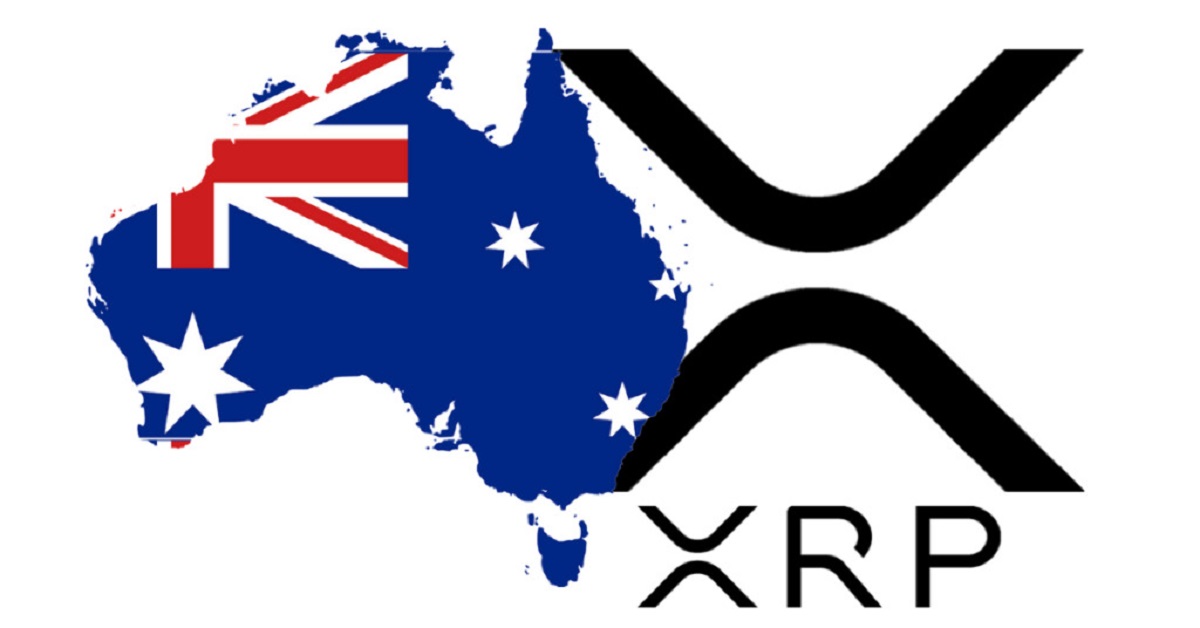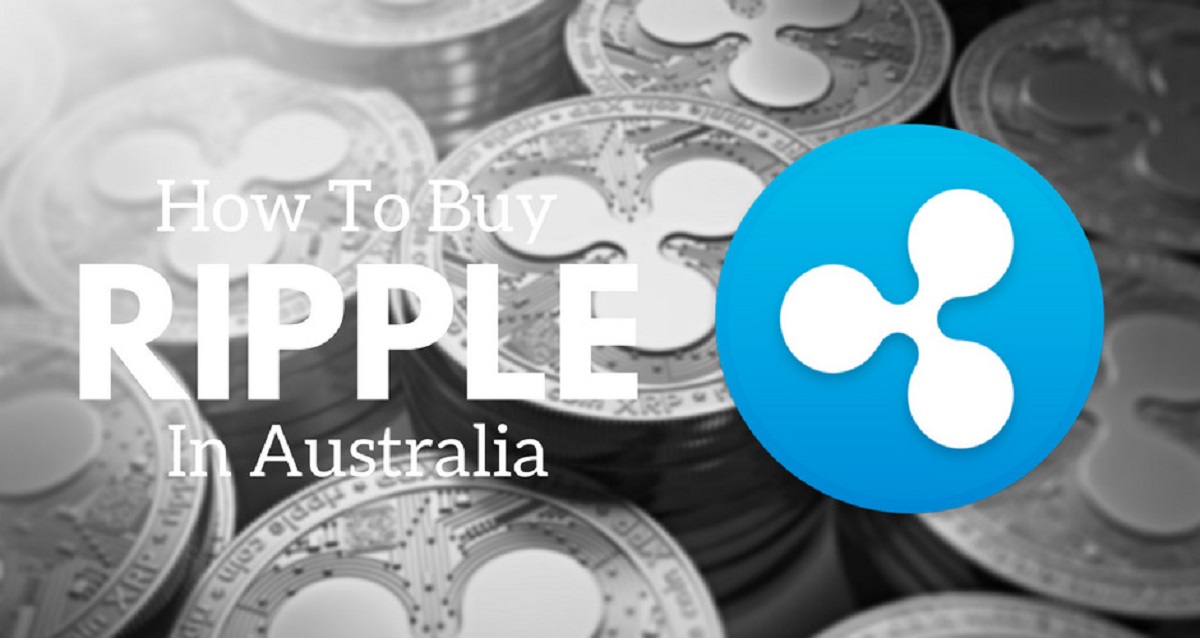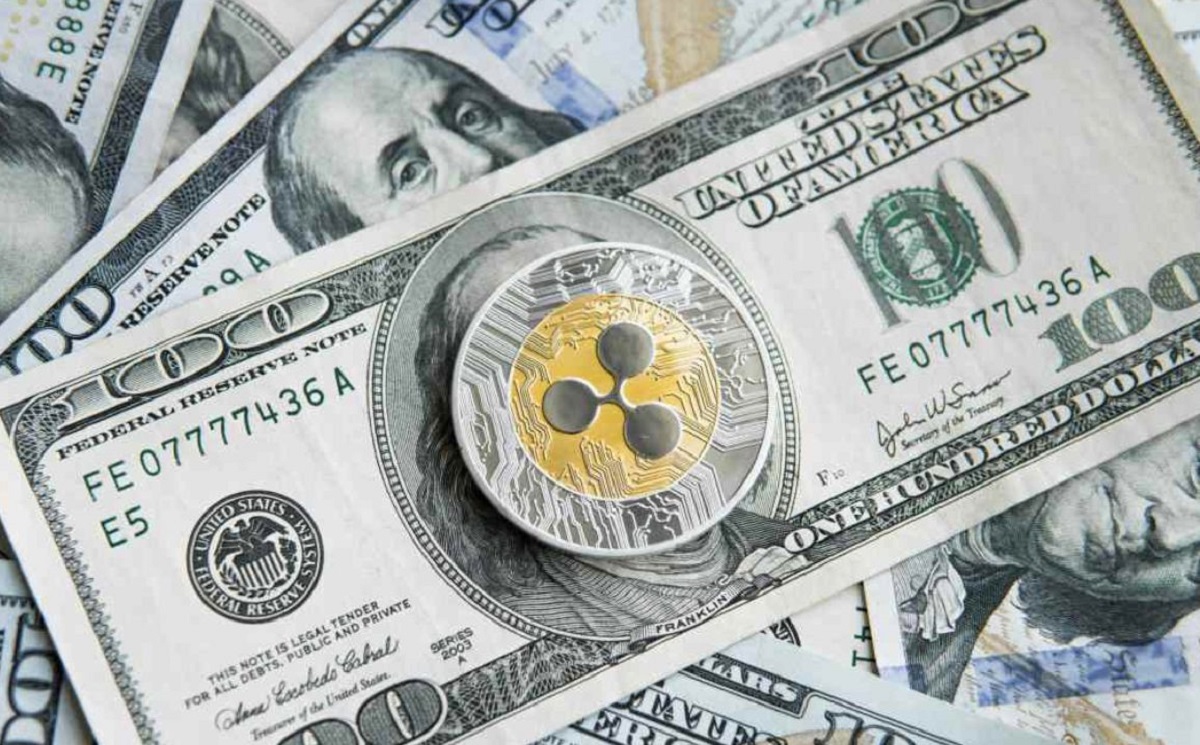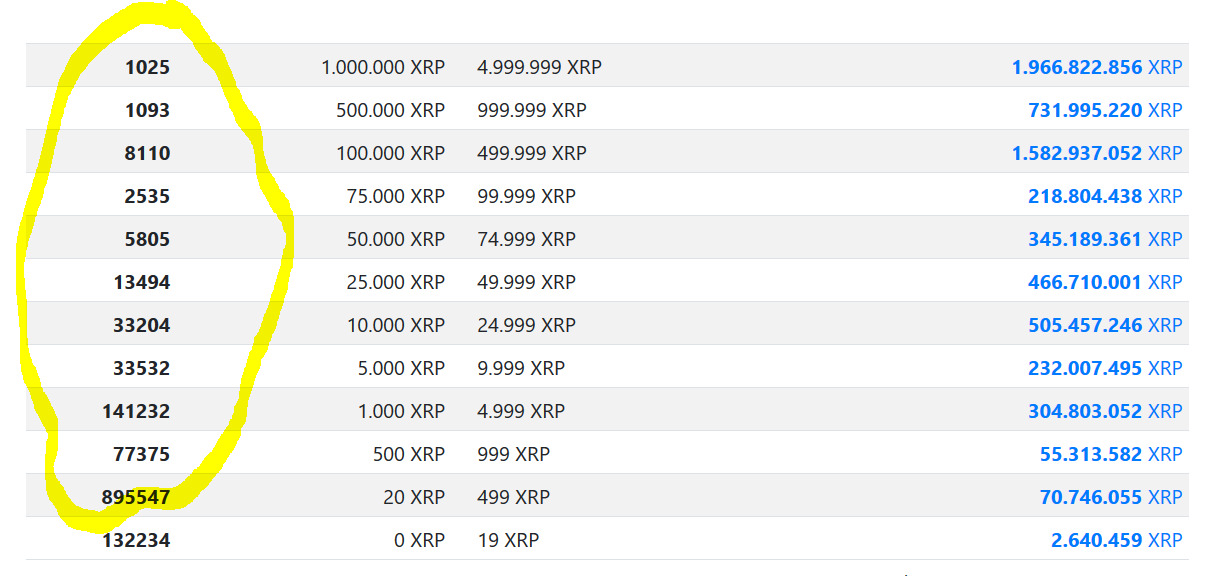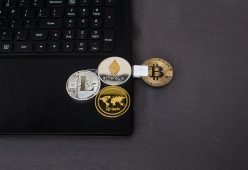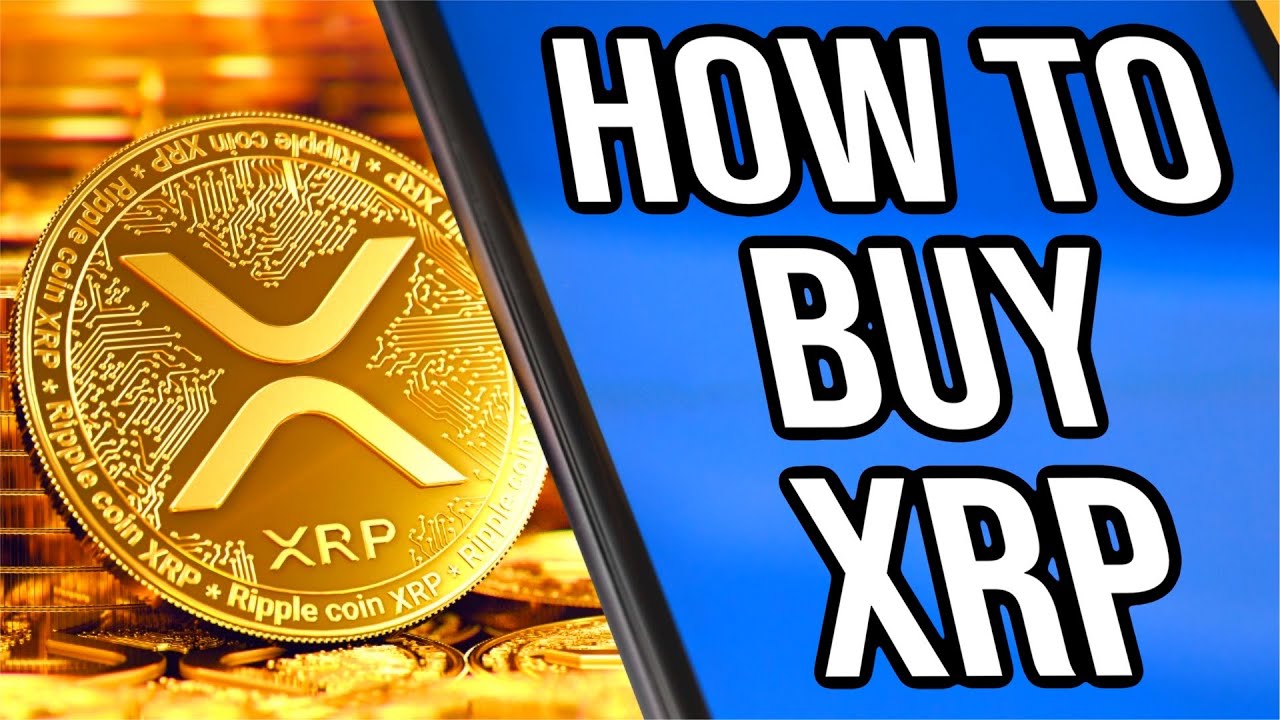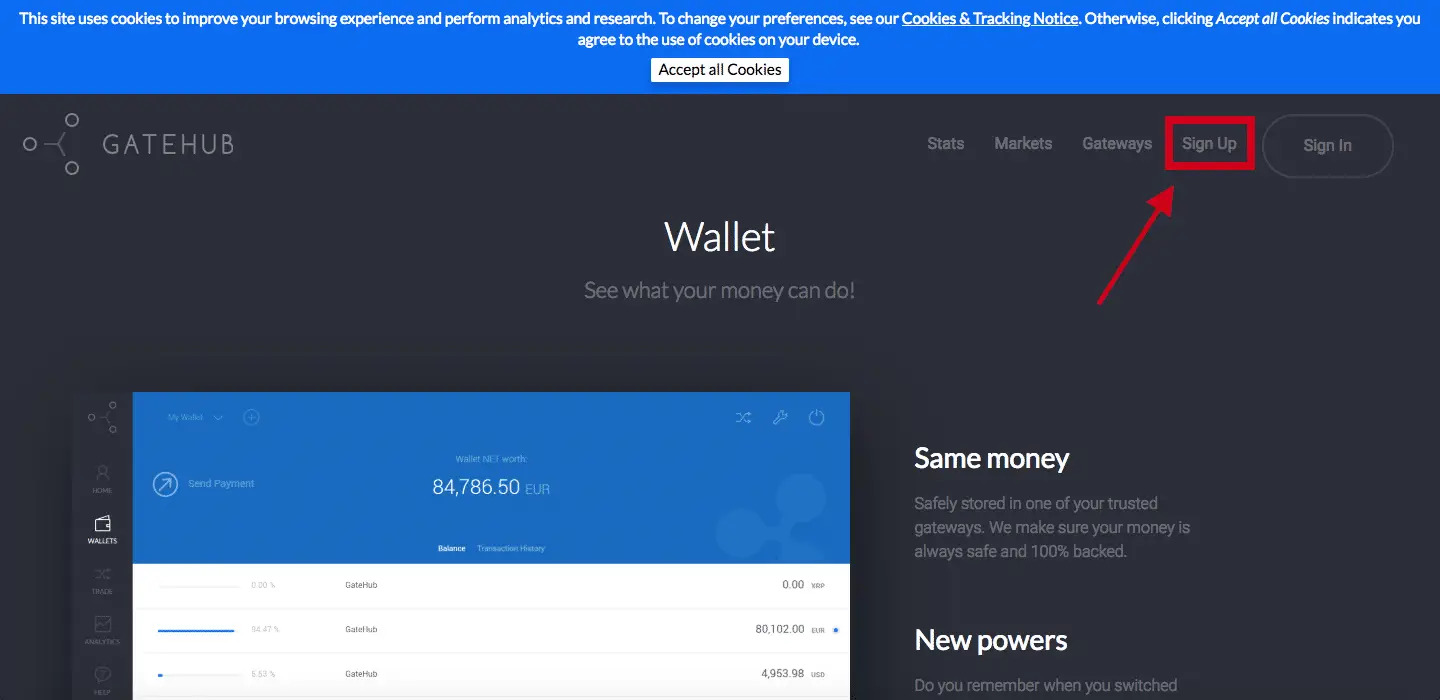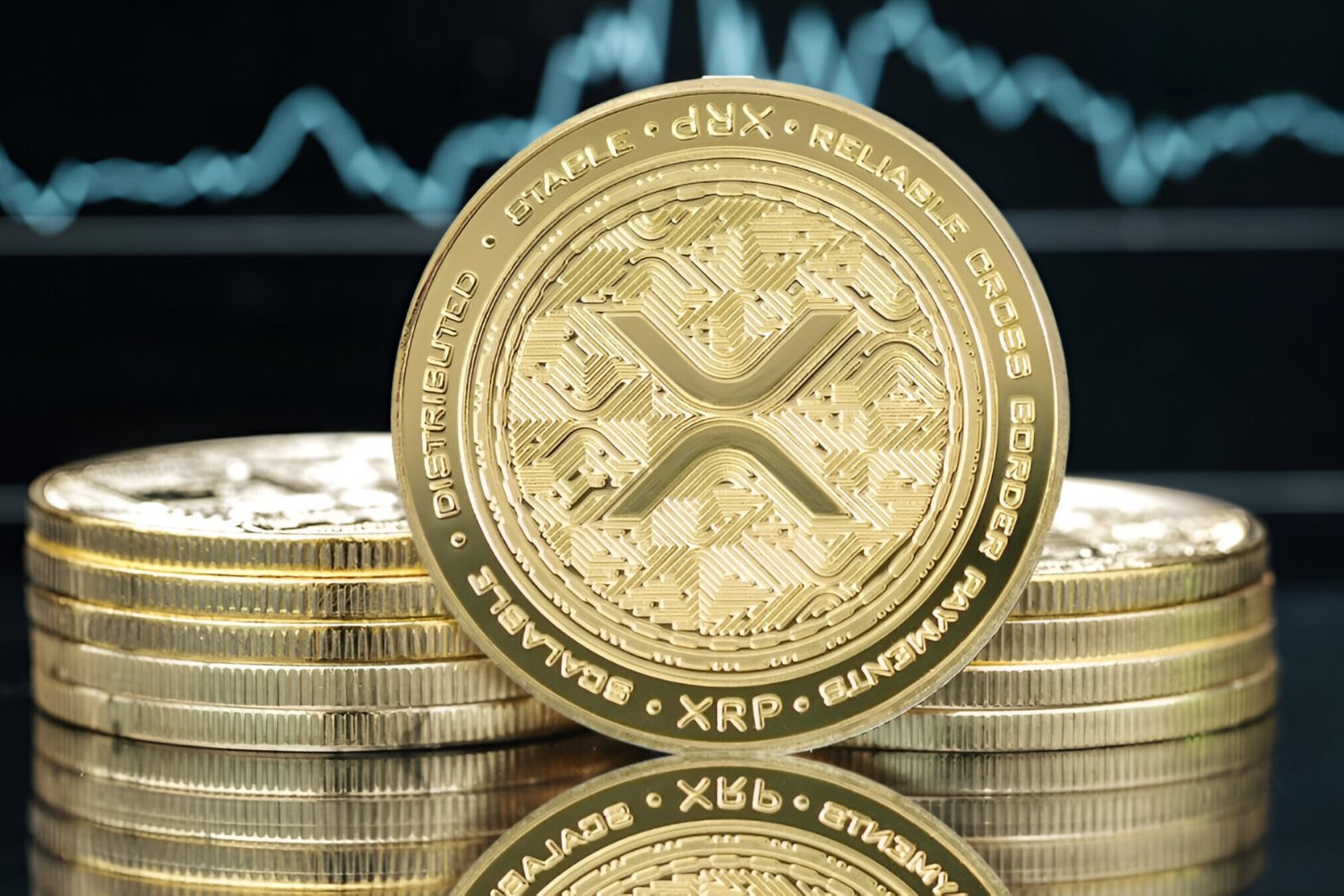Introduction
Welcome to the world of cryptocurrency trading! If you’re interested in investing in digital currencies like XRP in Australia, you’re in the right place. XRP, also known as Ripple, is a popular cryptocurrency with a growing presence in the financial industry.
Before diving into the process of buying XRP in Australia, it’s important to have a basic understanding of what XRP is. XRP is a digital asset that was created by Ripple Labs as a means to facilitate fast and low-cost international money transfers. Unlike Bitcoin or Ethereum, XRP is not primarily focused on individual transactions, but on facilitating secure and efficient cross-border transactions between financial institutions.
The first step in buying XRP in Australia is choosing a reliable cryptocurrency exchange. There are several exchanges available in the Australian market, each with its own set of features and fees. It’s important to research and compare different exchanges to find the one that best suits your needs.
Once you’ve selected an exchange, the next step is setting up an account. This typically involves providing some personal information and creating a unique username and password. Make sure to choose a strong password and enable two-factor authentication for added security.
Before you can start trading, most exchanges require you to verify your identity. This is done to comply with anti-money laundering (AML) and know your customer (KYC) regulations. The verification process may involve providing a copy of your identification documents and proof of address.
Now that your account is set up and verified, it’s time to fund your account. You can fund your account using various methods such as bank transfers, credit/debit cards, or other cryptocurrencies. Check the fees and processing times associated with each funding option to choose the most suitable one for you.
Once your account is funded, you can place an order to buy XRP. Depending on the exchange, you can place market orders, limit orders, or stop orders. Market orders are executed immediately at the current market price, while limit orders allow you to set a specific price at which you want to buy XRP.
After purchasing XRP, it’s important to store it in a secure wallet. There are different types of wallets available, including hardware wallets, software wallets, and online wallets. Hardware wallets provide the highest level of security as they store your XRP offline.
Lastly, it’s crucial to monitor your investment and stay informed about market trends and news related to XRP. Cryptocurrency markets can be highly volatile, so it’s important to stay up to date with the latest developments and adjust your investment strategy accordingly.
By following these steps and staying informed, you can successfully buy XRP in Australia and participate in the growing world of digital currencies. Remember to only invest what you can afford to lose and do thorough research before making any trading decisions.
Understanding XRP
Before delving into the process of buying XRP in Australia, it’s essential to have a deeper understanding of what XRP is and how it functions in the world of cryptocurrencies.
XRP, created by Ripple Labs, is a digital asset that serves as a bridge currency for facilitating fast and low-cost international money transfers. While Bitcoin and Ethereum aim to revolutionize individual transactions, XRP focuses on enabling secure and efficient cross-border transactions between financial institutions.
The primary goal of XRP is to provide a seamless experience for financial institutions looking to move money around the world quickly. It allows these institutions to avoid the traditional correspondent banking system, which often leads to delays, high fees, and limited transparency.
The unique feature of XRP lies in its use of a consensus algorithm called the XRP Ledger. This decentralized ledger is maintained by a network of trusted validators, making it extremely secure and reliable. Unlike traditional blockchain systems, the XRP Ledger can handle a high volume of transactions with impressive speed, settling transactions in a matter of seconds.
Another important aspect of XRP is its limited supply. Unlike Bitcoin, which has a maximum supply of 21 million, XRP has a total supply of 100 billion. However, not all 100 billion XRP are in circulation. Ripple Labs holds a significant portion of the supply, but they have committed to selling them gradually to ensure stability in the market.
It’s worth noting that XRP is not mined like Bitcoin and other cryptocurrencies. All the XRP tokens were created at once during its launch, which eliminates the need for energy-intensive mining processes. This unique distribution model allows for predictable and controlled supply growth.
The usage of XRP extends beyond cross-border transactions. Ripple, the company behind XRP, has developed various financial solutions for banks and other financial institutions. One of their products, xRapid, utilizes XRP as a bridge currency for liquidity sourcing, enabling faster and more cost-effective transfers.
In summary, XRP is a digital asset designed to facilitate fast, secure, and low-cost international money transfers between financial institutions. It operates on a decentralized ledger called the XRP Ledger and stands out for its speed, scalability, and limited supply. With Ripple’s innovative financial solutions and the growing adoption of XRP, it has become an exciting option to consider for cryptocurrency investors.
Choosing an Exchange
When it comes to buying XRP in Australia, choosing the right cryptocurrency exchange is crucial. An exchange is an online platform that allows you to buy, sell, and trade cryptocurrencies. Here are some factors to consider when selecting an exchange:
Reputation and Security: Look for exchanges with a solid reputation and a strong focus on security. Check if the exchange has experienced any security breaches in the past and how they responded to them. Research user reviews and feedback to get a sense of the exchange’s reliability.
Licensing and Regulation: Make sure the exchange is licensed and regulated in Australia. This provides an extra layer of protection for your funds and helps ensure that the exchange operates in compliance with local laws and regulations.
Supported Coins: Check if the exchange supports XRP trading. Some exchanges may have a limited selection of cryptocurrencies, so ensure that XRP is available before signing up.
Liquidity: Liquidity refers to the ease with which you can buy or sell XRP on the exchange. Look for exchanges with high trading volumes and a large number of active users. Higher liquidity means better price stability and faster execution of orders.
Trading Fees: Exchanges charge fees for buying, selling, and trading cryptocurrencies. Compare the fee structures of different exchanges to find the most cost-effective option. Be aware of any hidden fees or additional charges that may apply.
User Interface: A user-friendly interface can make a significant difference in your trading experience. Look for exchanges with intuitive interfaces that are easy to navigate. Consider if the exchange offers advanced trading features, such as stop-loss orders or margin trading, if you require them.
Customer Support: Evaluate the level of customer support provided by the exchange. Prompt and helpful customer support can be crucial, especially in cases of technical issues or account-related inquiries. Look for exchanges that offer multiple support channels, such as email, live chat, or phone.
Payment Methods: Check which payment methods are supported by the exchange. Some exchanges may only accept bank transfers, while others offer additional options such as credit/debit card payments or even support for other cryptocurrencies. Choose an exchange that provides convenient funding methods for you.
Geographical Restrictions: Ensure that the exchange is available and fully operational in Australia. Some exchanges may have restrictions on certain countries or regions, which could limit your access to their services.
By considering these factors, you can find a reputable and user-friendly exchange that meets your trading needs. Remember to do thorough research, read reviews, and compare different options before making a decision. A well-chosen exchange will not only provide a secure platform to buy XRP but also enhance your overall trading experience.
Setting Up an Account
Setting up an account is the next step in buying XRP in Australia. Here’s a guide on how to get started:
Research: Before choosing an exchange, research and compare different options to find the one that suits your needs. Consider factors such as reputation, security, supported coins, liquidity, trading fees, user interface, customer support, payment methods, and geographical restrictions.
Visit the Exchange Website: Once you’ve decided on an exchange, visit its official website. Look for a prominent “Sign Up” or “Register” button to initiate the account creation process.
Create a Username and Password: Follow the prompts to create a unique and secure username and password. Make sure to use a strong password that combines upper and lower case letters, numbers, and special characters. Consider enabling two-factor authentication (2FA) for an added layer of security.
Provide Personal Information: Most exchanges require you to provide some personal information to comply with regulatory requirements. This typically includes your full name, email address, and sometimes your residential address. The exchange may also ask for your date of birth for age verification purposes.
Read and Accept Terms of Service: Take the time to read the terms of service and privacy policy provided by the exchange. It’s important to understand the rules and policies that govern your use of the platform. If you agree to the terms, check the box or click the appropriate button to accept them.
Complete Email Verification: After registering, the exchange will usually send you a verification email. Open the email and click on the verification link provided to confirm your email address. This step ensures that the email address you provided is valid and belongs to you.
Set up Two-Factor Authentication (2FA): Two-factor authentication adds an extra layer of security to your account. Enable 2FA by downloading a compatible authentication app, such as Google Authenticator or Authy, and follow the instructions to link it to your exchange account. This will require you to provide a unique code from the authentication app each time you log in.
Secure Your Account: Protect your account from unauthorized access by taking additional security measures. This includes regularly updating your password, enabling email or SMS notifications for account activity, and avoiding sharing sensitive account information with others.
Explore Account Settings: Once your account is set up, take some time to explore and configure the settings according to your preferences. Familiarize yourself with features such as account verification, withdrawal limits, trading options, and any additional security settings available.
Be Mindful of Scams: Be cautious of phishing attempts and scams that may target cryptocurrency users. Always double-check the website URL to ensure you are on the official exchange site and be wary of any suspicious emails or messages asking for your account information.
Setting up an account is an important step to begin your XRP trading journey. By following these guidelines and adopting good security practices, you can create a secure and reliable account on your chosen exchange.
Verifying Your Identity
Verifying your identity is a crucial step in the process of buying XRP in Australia. It is a requirement imposed by most cryptocurrency exchanges to comply with anti-money laundering (AML) and know your customer (KYC) regulations. Here’s what you need to know about verifying your identity:
Why Verification is Necessary: Cryptocurrency exchanges have a legal obligation to prevent illicit activities such as money laundering and terrorist financing. By verifying your identity, the exchange ensures that you are a legitimate user and not engaging in illegal activities.
Required Documents: The exact documentation required for verification may vary between exchanges, but common documents include:
- Government-issued identification document: This can be a passport, driver’s license, or national identification card. Make sure the document is valid and not expired.
- Proof of address: This can be a recent utility bill, bank statement, or government-issued document that clearly shows your name and residential address. The document should not be older than three months.
The Verification Process: The verification process typically involves the following steps:
- Upload Documents: Log in to your exchange account and navigate to the verification or account settings section. Follow the instructions to upload clear and high-quality scans or photos of your identification document and proof of address.
- Wait for Verification: Once you have submitted your documents, the exchange will review them. The time taken for verification may vary, but it usually ranges from a few hours to a few business days. Some exchanges provide updates on the verification status via email or on the account dashboard.
- Additional Steps: In certain cases, the exchange may require additional information or documents for verification. This could include a selfie or a photo of you holding your identification document for identity verification purposes.
The Importance of Accuracy: When submitting your documents, ensure that all the information is accurate and matches the details provided during the account registration. Any discrepancies may result in delays or rejection of the verification process.
Security and Privacy: Reputable exchanges take user security and privacy seriously. They employ robust security measures to safeguard your personal information. Before sharing any documents, ensure that the exchange has implemented encryption protocols and has a privacy policy in place to protect your data.
Identity Verification Tips:
- Read the exchange’s guidelines and requirements for identity verification before submitting your documents. This will help ensure that you provide the correct documents and avoid unnecessary delays.
- Ensure that your documents are in good condition, legible, and comply with the exchange’s guidelines for document uploads.
- Double-check all the details provided during the verification process to avoid any errors or discrepancies.
- Be patient during the verification process, as it can take some time. Avoid submitting multiple verification requests or contacting customer support repeatedly, as this may further delay the process.
Verifying your identity is a necessary step to comply with regulatory requirements and ensure a secure trading environment. By providing accurate and valid documents, you can successfully complete the verification process and gain full access to trading XRP on your chosen exchange.
Funding Your Account
Once your account is set up and verified, the next step in buying XRP in Australia is to fund your account. Funding your account involves depositing funds that you can use to purchase XRP. Here’s what you need to know about funding your account:
Supported Payment Methods: Different cryptocurrency exchanges support various payment methods. Common options include:
- Bank Transfers: Many exchanges accept deposits via bank transfers. You will need the exchange’s banking details to initiate the transfer from your bank account to your exchange account. Keep in mind that bank transfers may take a few business days to clear.
- Credit/Debit Cards: Some exchanges allow you to fund your account using your credit or debit card. This offers a convenient and instant way to deposit funds. However, fees may apply, and there may be limitations on the maximum amount you can deposit.
- Other Cryptocurrencies: Depending on the exchange, you may have the option to deposit other cryptocurrencies, such as Bitcoin or Ethereum, and convert them to XRP within the exchange platform. This can be a quick and easy way to fund your account if you already hold other cryptocurrencies.
- Alternative Payment Methods: Some exchanges may support alternative payment methods, such as PayPal or digital payment systems, for funding your account. Check the exchange’s website or contact their customer support for available options.
Exchange Fees: It’s important to be aware of the fees associated with funding your account. Exchanges often charge fees for depositing funds, and these fees can vary depending on the payment method used. Take the time to compare the fees across different exchanges and payment methods to choose the most cost-effective option.
Deposit Processing Times: The processing times for deposits can vary depending on the payment method and the exchange. Bank transfers typically take longer, ranging from a few business days to a week, while deposits made via credit/debit cards or other cryptocurrencies are usually instant or near-instant.
Deposit Limits: Exchanges may impose limits on the amount of funds you can deposit into your account. These limits can be daily, weekly, or monthly. Ensure that you are aware of the deposit limits imposed by your chosen exchange and verify if these limits are suitable for your trading needs.
Security Considerations: When depositing funds, prioritize the security of your account. Be cautious of phishing attempts and only use official exchange websites or apps. Ensure that the exchange’s website is secure (look for “https” in the URL) and that you are on the correct website by double-checking the domain name.
Keep Track of Deposits: It’s essential to keep a record of your deposits for reference purposes, especially if you are depositing funds from multiple sources or using different payment methods. This will help you stay organized and track your account balances accurately.
Top-up Amounts: Consider the amount you wish to deposit into your account. It’s generally recommended to start with a smaller amount until you become more familiar with the exchange’s platform and trading process. This allows you to test the waters without committing a significant amount of capital.
By considering these factors, you can successfully fund your account and have the necessary funds available to purchase XRP. Take the time to compare fees, processing times, and payment methods to choose the most suitable funding option for your needs.
Placing an Order
Once you have successfully funded your account, the next step in buying XRP in Australia is to place an order. Placing an order involves specifying the amount of XRP you want to buy and executing the trade. Here’s a step-by-step guide on how to place an order:
Choose the trading pair: Most exchanges offer multiple trading pairs, such as XRP/AUD or XRP/BTC. Select the trading pair that matches the currency you deposited into your account. For example, if you funded your account with Australian dollars (AUD), choose the XRP/AUD trading pair.
Market or Limit Order: Decide whether you want to place a market order or a limit order. A market order is executed immediately at the current market price, while a limit order allows you to set a specific price at which you want to buy XRP. If you choose a limit order, enter the desired purchase price.
Order Amount: Specify the amount of XRP you want to buy. This can be entered in the form of XRP units or in the currency equivalent, depending on the exchange’s interface. Double-check the amount to ensure accuracy.
Review the Order: Take a moment to review your order details, including the trading pair, order type, price (for limit orders), and order amount. Make sure everything is correct before proceeding.
Execute the Order: Once you are satisfied with the order details, click the “Buy” or “Place Order” button to execute the trade. The exchange will process the order and finalize the purchase of XRP.
Order Confirmation: After executing the order, you will typically receive a confirmation message, indicating that the order has been placed. Keep an eye out for this confirmation and take note of the order ID or any other reference provided by the exchange.
Order Status: Depending on the exchange, you may have access to order status updates. This will allow you to monitor the progress of your order, such as confirmation, execution, or cancellation.
Partial Fills: In some cases, your order may be partially filled, especially if the liquidity is low or if the market is volatile. This means that only a portion of your desired XRP amount will be purchased at the specified price. The remaining balance will remain as an open order until filled or cancelled.
Order History: Most exchanges provide an order history section where you can track your past orders. This allows you to review your trading activity and monitor the execution of your XRP purchases.
Market Orders vs. Limit Orders: Market orders are simple and execute instantly at the current market price. However, keep in mind that market orders may experience slippage, i.e., the execution price may be slightly different from the expected price due to market fluctuations. Limit orders give you more control over the purchase price but may not execute immediately if the market does not reach your specified price.
Understanding Fees: Be aware of the fees associated with placing an order. Exchanges typically charge a trading fee for each completed trade. These fees can vary depending on the exchange and trading volume. Make sure to review the fee structure on the exchange’s website to understand the costs involved.
By following these steps, you can confidently place an order to buy XRP on your chosen exchange. Remember to double-check your order details before executing the trade and to monitor your order status for updates.
Storing Your XRP
Once you have purchased XRP, it’s essential to store it securely. Storing your XRP properly ensures the safety of your digital assets and protects them from unauthorized access or theft. Here are some storage options you can consider:
Exchange Wallets: Most cryptocurrency exchanges provide wallets within their platform to store your XRP. These wallets are convenient for trading and quick access to your XRP. However, it’s important to note that storing your XRP on an exchange wallet can be risky, as exchanges are often targeted by hackers. If you choose to use an exchange wallet, be sure to enable two-factor authentication (2FA) and follow the recommended security practices.
Software Wallets: Software wallets are applications that you install on your computer, smartphone, or tablet. They offer more control over your XRP and are typically more secure than exchange wallets. Popular software wallets for XRP include Ledger Nano S, Toast Wallet, and Exarpy. When choosing a software wallet, ensure that it is from a reputable source, has a good track record, and provides regular updates for security enhancements.
Hardware Wallets: Hardware wallets are physical devices specifically designed to store cryptocurrencies securely. They provide the highest level of security and offer offline storage for your XRP. Hardware wallets, such as Ledger Nano X and Trezor Model T, keep your private keys offline, making them less vulnerable to hacking attempts. They are an excellent option for long-term storage of your XRP and provide peace of mind knowing that your funds are protected.
Paper Wallets: Paper wallets are a form of cold storage where you generate a physical copy of your XRP wallet’s public and private keys. This method ensures that your XRP is stored offline, making it less susceptible to hacking attacks. To create a paper wallet, you can use offline tools or websites that generate QR codes and printable wallet templates. It’s crucial to keep the printed copy in a secure and private location to prevent unauthorized access.
Security Considerations: Regardless of the storage method you choose, there are important security measures to follow:
- Backup Your Wallet: Regularly back up your wallet’s private key or seed phrase. This backup allows you to recover your XRP in case of loss, damage, or theft of your device.
- Secure Environment: Ensure that the device you use to access your XRP wallet is free from malware or any other security threats. Keep your operating system, antivirus software, and wallets up to date to protect against potential vulnerabilities.
- Phishing Awareness: Be cautious of phishing attempts and scams that may target cryptocurrency users. Always double-check the website URL and avoid clicking on suspicious links or providing your wallet’s private key or seed phrase to anyone.
- Multiple Wallets: Consider dividing your XRP holdings into multiple wallets to minimize risk. This strategy ensures that even if one wallet is compromised, the rest of your funds remain secure.
- Test Small Transactions: When using a new wallet or changing storage methods, it’s good practice to start with small transactions to ensure everything works as intended before moving larger amounts of XRP.
Remember that the security of your XRP ultimately lies in your hands. Research and select a wallet solution that best suits your needs and takes the necessary precautions to protect your digital assets.
Monitoring Your Investment
Monitoring your XRP investment is crucial to staying informed about market trends and making informed decisions. Here are some key points to consider when monitoring your XRP investment:
Price Analysis: Keep an eye on the price of XRP and analyze its historical data. Use charting tools and technical analysis indicators to spot trends, support, and resistance levels. This information can help you identify potential buying or selling opportunities.
News and Updates: Stay informed about the latest news, announcements, and developments related to XRP. This includes regulatory changes, partnerships, updates from Ripple Labs, and industry trends. News can impact the price and overall sentiment of the cryptocurrency market.
Market Volatility: Cryptocurrency markets are known for their volatility. Price swings can occur rapidly, presenting both opportunities and risks. Regularly monitor the volatility of XRP and be prepared for sudden price fluctuations.
Community and Social Media: Engage with the XRP community and follow XRP-related social media channels, forums, and discussion groups. These platforms can provide valuable insights and knowledge from other investors, traders, and enthusiasts.
Tracking Tools and Apps: Utilize tracking tools and apps to monitor the performance of your XRP investment. These tools provide real-time data, portfolio tracking, and customizable alerts. Consider using popular cryptocurrency tracking websites or dedicated mobile apps for convenience.
Set Realistic Goals: Define your investment goals and regularly reassess them. This will help you stay focused and avoid making impulsive decisions based on short-term price fluctuations. Setting realistic goals allows you to evaluate the performance of your investment over time.
Risk Management: Understand the risks associated with investing in cryptocurrencies and establish risk management strategies. This can include setting stop-loss orders to limit potential losses, diversifying your investment portfolio, and avoiding investing more than you can afford to lose.
Tax Considerations: Research and understand the tax regulations and obligations related to cryptocurrency investments in Australia. Keep proper records of your transactions and consult with a tax professional if needed.
Education and Continued Learning: Stay updated on cryptocurrency trends, trading strategies, and market analysis. Regularly educate yourself on fundamental and technical aspects of the cryptocurrency market to make informed investment decisions.
Emotional Discipline: Avoid making decisions based on emotions or market hype. A disciplined approach to investment is essential. Stick to your investment strategy and avoid making impulsive trades based solely on short-term market movements.
Monitoring your XRP investment ensures that you are well-informed and can adapt to market conditions. By keeping track of price movements, staying informed about news and updates, and maintaining emotional discipline, you can make informed decisions that align with your investment goals.
Conclusion
Congratulations! You’ve reached the end of this guide on how to buy XRP in Australia. By following the steps outlined, you should now have a good understanding of the process and considerations involved in purchasing XRP.
Remember, before jumping into the world of cryptocurrency trading, it’s important to fully educate yourself about XRP and the underlying technology. Take the time to research, read reliable sources, and stay updated on market trends and news.
Choosing the right exchange is crucial for a smooth and secure trading experience. Consider factors such as reputation, security measures, supported coins, liquidity, and user interface when selecting an exchange.
Setting up your account and verifying your identity are vital steps to comply with regulatory requirements and establish trust with the exchange. Make sure to follow the instructions carefully and provide accurate information during the verification process.
When it comes to funding your account, be aware of the available payment methods, fees, and processing times. Choose the option that best suits your needs and aligns with your trading preferences.
Placing an order involves selecting the trading pair, determining whether to place a market or limit order, and specifying the order amount. Be mindful of the details before executing the trade.
After purchasing XRP, it’s important to store it securely. Consider the different storage options, such as exchange wallets, software wallets, hardware wallets, or even paper wallets. Implement the necessary security measures to protect your digital assets from unauthorized access.
Monitoring your XRP investment and staying informed is crucial for making well-informed decisions. Regularly analyze the price, follow the latest news and updates, and utilize tracking tools and apps to assess the performance of your investment.
Lastly, always remember that investing in cryptocurrencies involves risks. It’s important to allocate your funds wisely, set realistic goals, and manage your risk effectively. Be prepared for market volatility and avoid making impulsive decisions based on emotions or sudden market movements.
Now that you have a solid understanding of the process and considerations involved in buying XRP in Australia, you can confidently embark on your cryptocurrency investment journey. Remember to approach it with patience, diligence, and a willingness to learn and adapt to the ever-evolving crypto landscape. Happy trading!







